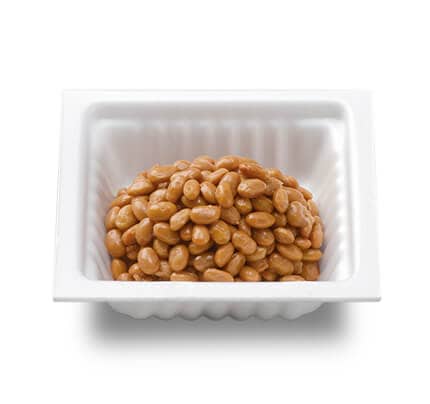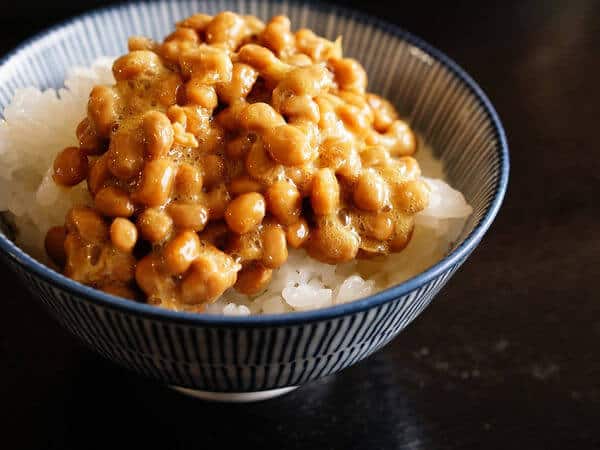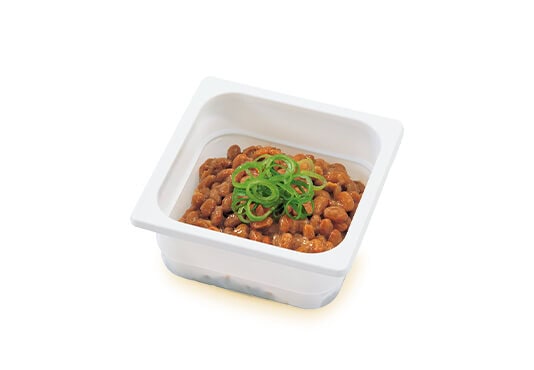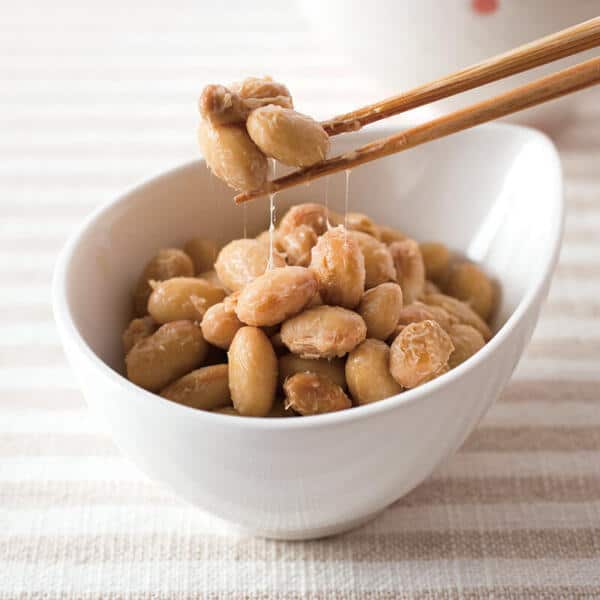INTRODUCTION TO NATTO
Natto is one of those traditional Japanese fermented foods. It is one of the healthy Japanese food in Japan. Most locals love this and have enjoyed eating it. It makes up of soybeans and has natto bacteria as a fermentation agent to soybeans. It also uses a boiled rice straw as the source of fermentation bacteria.
Some thought that this is unique to Japan, but it exists in other regions. The home of Natto is in Ibaraki prefecture in the Kanto region. Ibaraki Prefecture is part of the Kanto region on the main island of Honshu. It is accessible via car (a 1.5-hour drive from Tokyo). Along with Stamina Ramen, Natto is one of those specialties of Ibaraki prefecture. Here, we can get to know what Natto is and what dishes do Japanese people cook with it.
ETYMOLOGY

There are several theories as to why they named it as it is. In the past, Monks who prepare and eat Natto in the temple kitchen came up with the name of Nashomame (ãªã£ã—ょã¾ã‚). Afterward, they shortened it to “Natto.” The second theory is that in the old days, locals made soybeans in rice straw.
Also, they stored it in containers such as tubs and jars. The word “natto” also first appeared in the literature during the Heian period. It depicts popular performing arts and the lives of ordinary people at that time. It appears in the “Shinsarugakuki” by Fujiwara no Akiyoshi. However, the book discusses the salted natto. It is a fermented boiled soybean with Jiuqu, adding salt and spices and drying it.
Lastly, a theory about it being a gift for God. Bacteria in the boiled beans living in rice straw accidentally bred while serving it on the Kamidana shelf. Subsequently, the beans created strings by chance. In northern countries, the meaning of “Natto” is the beans in the ritual of giving beans to God, in gratitude to the God who gave us delicious food.
WHAT IS NATTO

Natto is a traditional Japanese food and a specialty of Ibaraki prefecture. It is one of those fermented foods using natto bacteria as a fermentation agent to soybeans. The bacteria decompose the ingredients and synthesize them with different ones to give its taste and stickiness
Consequently, there are various types of Natto according to their size and color. It has different varieties and characteristics depending on the regions. In the Japanese culture, they have many dishes that use this as their main ingredients. In fact, it is smelly, and if you mix the beans, they form a kind of glue-like paste with long stringy bits. Some say that mixing the beans 100 times will bring you good luck. It is usually put on top of rice and eats it as a side dish, with a raw egg or some spring onions.
TYPES OF NATTO
Amanatto
It makes the Natto into a sweeter type by boiling the beans with sugar.
Itohiki natto
It is familiar for Japanese to have it together with rice. It has two types; whole soybean natto and hikiwari natto.
Tera Natto
Also known as Betsumei or Shiokara Natto, contains soybeans, wheat, and Jiuqu (same as miso and sake-making bacteria). It takes several months to a year to make it. When it is complete, it will be half-dried blackish brown. It has a unique flavor that is a harmony of salty taste and umami.
HISTORY OF NATTO

FIRST THEORY
During the Jomon period, the Japanese discovered soybeans from mainland China. Subsequently, around the Yayoi period, rice cultivation began and became widespread. However, no one knows whether the origin of the Natto dates back to that time. Many locals dispute its history stories, but in any case, it is the encounter between boiled beans and straw that triggers it all.
SECOND THEORY
During 1086-1088 AD when some samurai were boiling soybeans to eat when they are suddenly attack. They hurriedly pack up their beans in some straw and open it a few days later to discover it fermented. They ate them anyway and showed them to their boss, and everyone seemed to have liked it enough to recreate it.
Another theory about the rice straw was during the Yayoi period when the rice straw was on the pithouse floor. Bacillus natto is the fermentation agent, and it prefers warm and moist places. Therefore, rice straw with excellent heat retention and moisturizing properties is a suitable habitat for the bacteria.
THIRD THEORY
Many also know about Taro Hachiman Yoshiie in the theory of the origin of the Natto. The Yawata Taro Yoshiie is Minamoto no Yoshiie, a military commander in the late Heian period. He went on an expedition to Oshu (now the Tohoku region) and fought for the battle. Horses were indispensable for the war at that time, and they make use of soybeans as feed for them.
They boiled, dried, packed soybeans in bales. However, the battle prolonged longer than they expected, and as a result, the horses’ feed ran out. Yoshiie hurriedly ordered the farmers to offer soybeans as feed. The farmers did not cool the boiled soybeans well but packed them in a bale while still hot and fed them to the horses. Then, a few days later, the boiled beans became smelly and were stringing. This boiled bean was delicious when they tried it, so they decided to use it as food for the soldiers.
In the present, you can easily buy it in styrofoam packs, complete with servings of soy sauce and mustard.
NATTO RECIPE
The ordinary recipe that goes well with it are spices such as green onions, green perilla, ginger, sesame seeds, and chirimen-jako. It goes well with eggs. For its seasonings, stir-fried foods, pasta, etc.
HOW TO MAKE NATTO?

Glutamic Acid acts as an agent that causes the stickiness of Natto. This glutamic acid results from the decomposition of protein by Natto bacteria and fructan (a type of sugar). It is also one of the delicious ingredients contained in kelp.
TRADITIONAL METHOD
Traditionally, locals steamed the soy rice wrapped in a straw wrapper. They have to keep it like that for one day and at a temperature of about 40 degrees.
The Bacillus natto on the rice straw will be transfer to soybeans and proliferates for the fermentation to happen.
MODERN METHOD
In the present day, you can also make this at home. All you need is thoroughly boiled soybeans. The temperature should be around (30-45 degrees) for the bacteria to grow.
It should also have moderate humidity, an average time (1 to 2 days), and enough oxygen. Without proper temperature, sufficient time, and oxygen, you cannot make a perfect Natto and it will remain boiled. If there is no moderate humidity, it will become dried soybeans, and if it has an excessive time, the smell of ammonia will be strong, mostly like it is rotten.
We can make the Natto right now, but it can also be eaten by making different dishes out of it. There are also some restaurants that serve this. You will learn that on the next page.
NATTO DISHES
Natto Soup
Used as a seasoning or an ingredient in the miso soup. In the Edo period, there was a “natto seller” who sells this like an instant miso soup. Consequently, it was the mainstream way of eating than Nattou Gohan. You can find this one still in the Tohoku region.
Salt Natto
This is a local cuisine from some areas of Kochi prefecture. Sprinkle natto with salt and bran and fry in an iron pan. You can also find this dish in Kameoka City, Kyoto Prefecture, and the Makuni River basin in Wakayama Prefecture.
Stamina Natto
A dish of minced chicken fried in sesame oil, ginger, and garlic mixed with natto and tabasco as a secret ingredient. Some locals from central Tottori prefecture make this dish as a school lunch.
Nattou Maki
A thin roll of sushi with vinegared rice on top of seaweed and natto wrapped around it. The recipes for nattou maki are sushi rice, seaweed, and Kewpie pasta sauce. You can make one by firstly mixing the pasta sauce and ingredients. Secondly, Spread the wrap on the makisu, cut it in half, and spread half the amount of sushi rice. Thirdly, Place half the amount of 1 in 2 and roll it all at once. Make another one in the same way. Fourthly, Place three cuts into six equal parts in a bowl.
Nattou Gohan
It is one of the typical ways to eat even today. Nattou Gohan was popular during the Edo period. However, there is also etiquette when eating this one. Don’t eat the natto when it is still on top of the rice. When heated, it will destroy the nattokinase. Nattokinase is its enzyme and has the important effect of smoothing the blood. To get this effect, locals recommended eating the rice and nattou separately.
Soboro Nattou (ãã¼ã‚ç´è±†)
It is a traditional Mito side dish that is made by combining nattou with dried daikon radish and seasoning it with soy sauce. In the old days, each home makes this one, so it had its flavor.
Hoshi Nattou (å¹²ã—ç´è±†)
It is a traditional dish of dried seasoned nattou. Since the nattou is adequately dried, you can easily enjoy the taste. The saltiness of the natto enhances the taste of the dish. The more you chew, the more the flavor of natto spreads.
Nattou Mochi (ç´è±†é¤…)
There are many ways to eat mochi, but in Yamagata, nattou mochi is a must-see. Many households make this dish in the prefecture and lining it up in supermarkets’ side dish section. They will soak the steamed glutinous rice in water and serve it afterward. They don’t want it to get sticky because of the high moisture content, so they have to adjust the time depending on the day’s weather. If they don’t do that, the finished product will be different.
WHAT ARE THE HEALTH BENEFITS OF EATING NATTO?

Natto is one of the healthy Japanese food of Japan. It is rich in vitamin K and soybean-derived protein, which is essential for making blood coagulation factors and is a high-quality protein source. Dietary fiber is abundant at 4.9-7.6 grams in 100 grams. Dietary fiber is a useful component to help keep bowel movements regular.
The obesity tendency of Japanese people is accelerating. To prevent obesity, you should try to avoid an overdose of high-fat diets and snacks, and at the same time, exercise moderately. At the same time, it is best to eat foods that have a dieting effect. Many foods prevent obesity, one of which is natto. Furthermore, by combining natto with some foods, the taste becomes even more delicious, and various health effects will show.
Soy protein in natto has the function of suppressing fat storage, increasing the thyroid hormone activity that promotes fat burning, and preventing excess fat storage. In addition, it increases basal metabolism and increases the amount of energy burned even in a resting state. In other words, it is the soy protein contained in natto that has a “thinning effect” just by eating it.
Bacillus probiotics are useful to prevent inflammatory responses in the intestine while also strengthening the gut barrier. It has an antibacterial effect. Before antibiotics, it has the effect of suppressing the growth of dysentery, typhoid fever, pathogenic Escherichia coli, etc. Accordingly, it is also a treatment for abdominal pain and diarrhea.
Another style of Natto to get the Benefit.
Natto is very healthy. However, there are many people who cannot eat it or dislike it because of the unique smell of natto. Some companies are focusing on the nutrition of natto and selling this in various forms that make it easier to consume the nutrients of natto.
sonomo Inc. is one such company that sells nutrients in capsules, natto powder, and natto bean snacks by using a proprietary freeze-drying technology, sonomono is able to process whole natto, mantaining all its nutrition, probiotics and flavor.
What is especially nice about sonomo is that they also deliver to countries outside of Japan. This company is recommended for those who do not like natto but are concerned about their health.
If you live in the USA, you can buy them in Amazon USA

If you are interested Health Benefit of Natto, but hard to try.. Then please visit sonomo website and try their products.
Links to sonomo website
WHAT OTHER COUNTRIES HAVE NATTO AS THEIR DISH?

Natto is not only made in various parts of Japan but also in foreign countries. There are different names from different countries. They have “Toushi” in China, “Toanau” in Thailand, “Papo” in Myanmar, and “Dawadawa” in Africa. However, the stickiness is different from that of Japan. It seems that they prepared it as seasonings and as a preserved food.
IS IT OK TO EAT NATTO EVERYDAY?

Natto consumption is generally safe for most people. Nevertheless, it contains vitamin K1, which has blood-thinning properties. For this reason, individuals already taking blood-thinning medication should seek advice from their doctor before adding it to their diets.
IS CONSUMING FERMENTED FOOD SAFE?

Fermented foods are rich in probiotic bacteria, so by consuming fermented foods, you add beneficial bacteria and enzymes to your overall intestinal flora, increasing the health of your gut microbiome and digestive system and enhancing the immune system.
HOW OFTEN SHOULD YOU EAT FERMENTED FOODS?

Researchers and studies say that you should often eat fermented foods from two to three servings of fermented foods per day.
Where to buy Natto?
Sendai-ya (Tokyo)

This store is a natto specialty store that is rare in Japan. Sendai-ya offers all-you-can-eat natto at eat-in. You should know that some radios feature this store often. There are eight types in this shop; small, large, groat, edamame, sesame, wakame, hijiki, and millet.
Hakata Food Park Nattoya Sticky Land (Fukuoka)

Hakata Food Park is Japan’s first authentic natto restaurant that has been in business for 25 years. Located in Chuo-ku, Fukuoka City, there are many creative the dishes in Japanese, Western and Chinese. From natto croquettes to pizzas, cakes, and shrimp mayo. It is a well-known store featured on TV often.
Natto Shokudo

Located along an alley a little away from Iidabashi Station is a shop for natto lovers. Natto Shokudo is open as a cafeteria that serves set meals during the day and at night where you can drink sake as a pinch. The shop’s natto set meal includes two side dishes, two natto pickles, rice, miso soup for Â¥750. This shop is particular with their rice and miso, so its price is worth your stomach. Right now, the shop is currently not available.
Sansui

Sansui Mito is quite famous for its unique Natto dishes. It ranges from a feast set meal of ¥3,300 to a dried natto rice cake of ¥620. They use them to make small-sized local soybeans.
CONCLUSION

It seems like if you see Natto for the first time, you would think that it is dirty food. It is not rotten but is a food made by fermenting soybeans. You are decomposing the microorganisms by the method of rotting and fermenting the food. However, the difference between rotting and fermenting is whether humans eat what is the food after decomposing the microorganisms. If it is harmful or good for the body. Fermented foods include cheese, yogurt, and miso.
There are many beliefs and recommendations about how many fermented foods you should eat. Some people say to eat them many times a day, and others a few times a week. Your goal might be to get some fermented foods in your diet now and then — to acquire a taste and improve your health.
















Comments